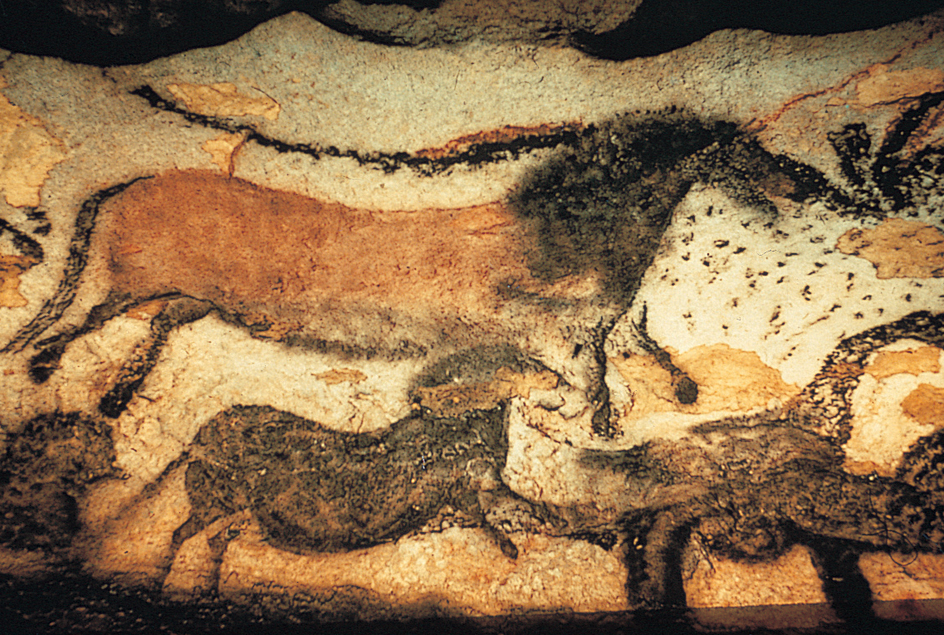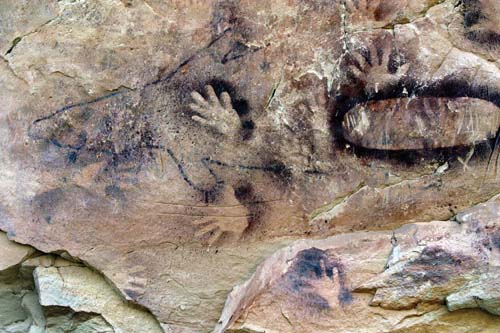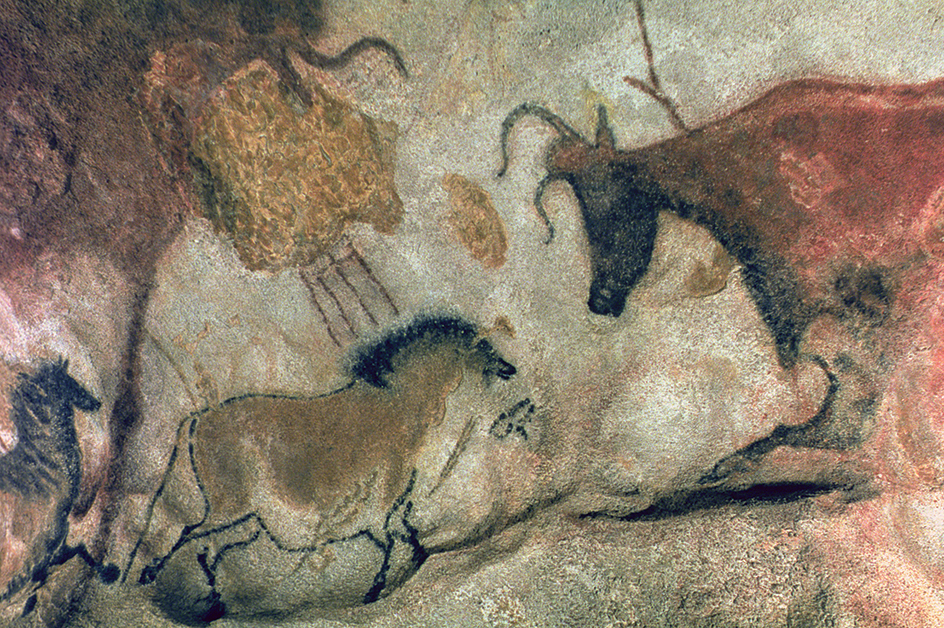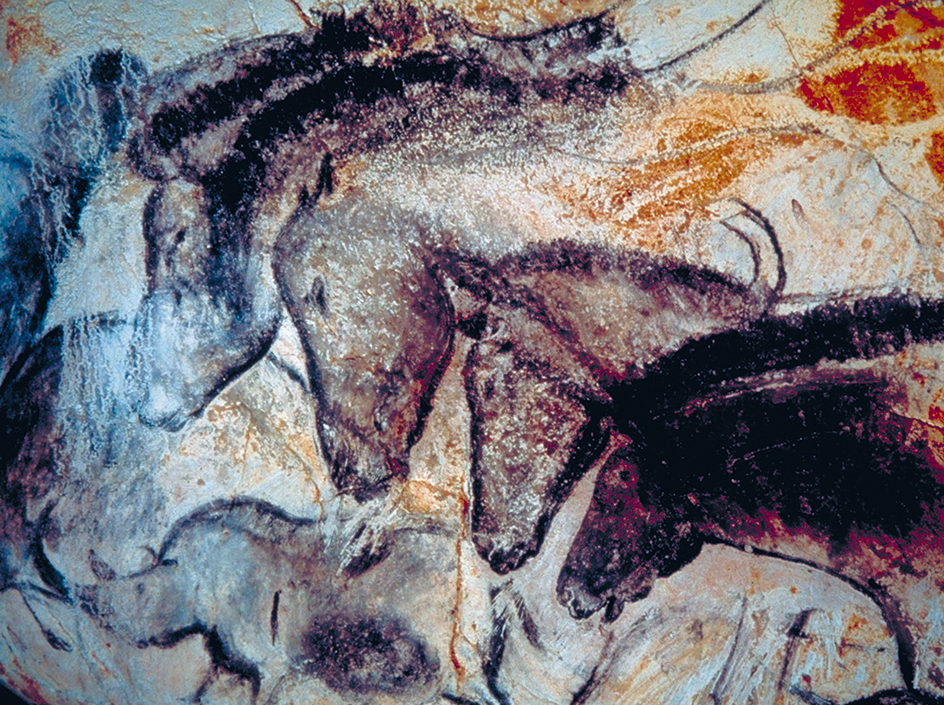Cave paintings and drawings appear on the ceilings, walls, and entrances of caves and rock shelters. They are found in many parts of Africa, Asia, Australia, Europe, and North and South America. Many of the most famous cave paintings were made in prehistoric times. A rich tradition of cave painting and other forms of rock art have continued into the modern era in several locations throughout the world. This article discusses mainly prehistoric cave paintings.

Archaeologists do not know why prehistoric people made cave paintings. They may have been painted as part of shamanistic rites or other religious practices. More recent cave paintings were often used in ritual experiences or ancestor worship. They may also mark territories, tell stories, or communicate other kinds of information. Archaeologists think prehistoric cave paintings may have served some of the same purposes.
A few sites in Europe show that Neandertals made simple cave paintings. But scholars think that most cave paintings were made by physically modern humans. These ancient cave paintings often show remarkable artistic skill. Scholars do not think that earlier prehistoric ancestors, such as Homo erectus, had the ability to produce cave paintings.
Kinds of cave paintings
Cave paintings may be figurative images. In a figurative image, the subjects are easy to recognize. Examples include paintings of animals, plants, and people. Some cave paintings show images of animals that prehistoric people hunted. Other paintings feature animals that are extinct today or no longer found in the region of the painting. For example, many prehistoric cave paintings in Europe include images of Ice Age animals such as rhinoceros and aurochs, an extinct wild ox. The Ice Age ended about 11,500 years ago. Also common are nonfigurative images, which are more abstract. Such images include circles, lines, dots, zigzags, and chevrons.

Handprints serve as a common image in cave paintings worldwide. Archaeologists know from studying the handprints that men, women, and children participated in making the images. One example comes from a cave called Gua Tewet in Borneo. There, a painted image of a vine and leaves links handprints made by men and women. These paintings are more than 10,000 years old. At Cosquer Cave in France, an adult lifted a baby to leave a tiny handprint near the ceiling more than 19,000 years ago.
How cave paintings were made
Prehistoric people made cave paintings and drawings using minerals and other naturally occurring substances. The pigments (coloring agents) include charcoal, manganese, and ochre. Ancient painters usually mixed one or more of these minerals with a binder or extender. A binder is a material that helps the paint stick to the cave wall. An extender is a material that artists use along with water to extend pigment and make it easier to apply. Common binder materials include blood, animal and vegetable oils, or egg whites. Commonly used extenders include the minerals biotite and feldspar.

Archaeologists analyzing pigments at two sites in southwest France noticed a change in the paint recipe that occurred about 13,000 years ago. The sites are one with paintings at Niaux Cave and one with pigment-stained artifacts at La Vache Cave. Over time, different extenders were developed and used. The artistic style of the paintings remained the same, despite the paint recipe change.
Prehistoric artists applied paint to the cave walls and ceiling using their fingers or by blowing through a tube. They often used hollow bones for this purpose. Archaeologists have found bird bones with traces of pigment in them at Lascaux Cave, a site in France. Prehistoric people probably also used brushes made of animal hair to apply paint to surfaces in and around caves.
Another method seen at caves in France and Australia is described as spit painting. Artists ground up pigment in their mouths, mixed with a small amount of saliva or water. They then spat the paint onto the cave wall. At Pech Merle, a site in France, a horse and handprints were painted this way. A stencil of an entire human body was made this way at a site near Mount Moffatt in Queensland, Australia.
Dating cave paintings
Archaeologists can date some cave paintings directly. Some pigments include an organic ( carbon-containing) material, such as charcoal. Archaeologists can take a small sample of such material for radiocarbon dating. If the pigment does not contain organic materials, archaeologists rely on indirect techniques. They may determine the age of mineral deposits that form over cave paintings. This provides a minimum age of the painting underneath. They may also determine the age of a painting by its style or by the type of artifacts associated with it.


Sites in Spain show that Neandertals made hand stencils and other nonfigurative paintings with red ochre on cave walls at least 64,000 years ago. The oldest cave paintings made by modern humans that are directly dated appear at Chauvet Cave in France. They date to approximately 37,000 years ago. This time was during a part of the Stone Age known as the Upper Paleolithic. Hand stencils and a red ochre dot on the walls of a site called El Castillo in northern Spain are thought to be about 40,000 years old. Handprints and animal drawings in caves on the islands of Borneo and Sulawesi in Indonesia are also thought to be up to 44,000 years old. Cave paintings in Australia and South Africa may be even older. However, many of the paintings in those countries were not made with organic pigments. They cannot thus be dated directly. Archaeologists at Blombos Cave in South Africa have found pigment processing tools and worn pieces of red ochre that date to almost 100,000 years ago. However, no paintings or drawings are preserved at this site.
